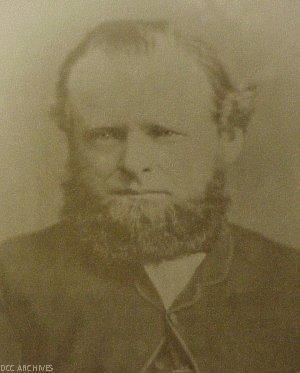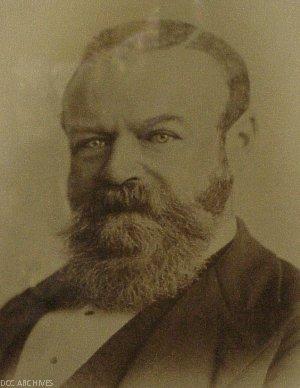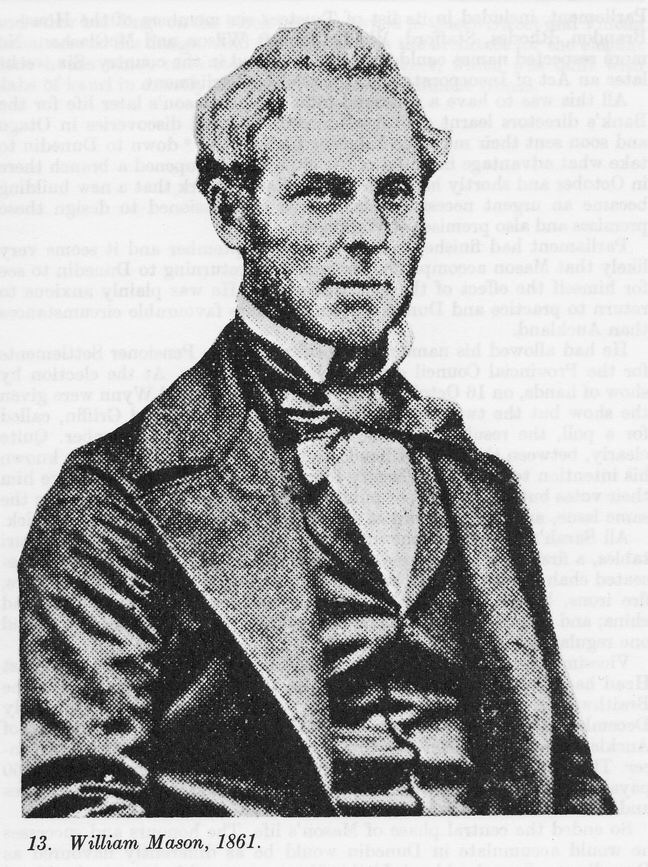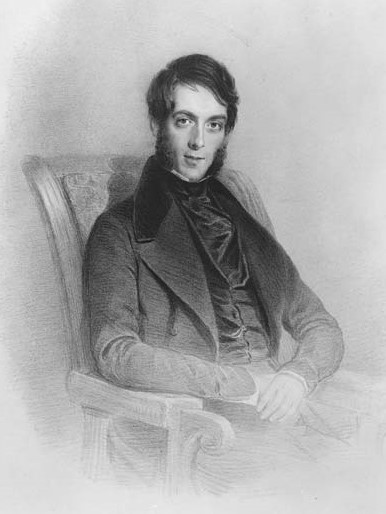|
1868 In New Zealand
The following lists events that happened during 1868 in New Zealand. Incumbents Regal and viceregal *Head of State — Queen Victoria *Governor — Sir George Grey is recalled by the British government and is replaced on 5 February by Sir George Ferguson Bowen. Government and law The 4th Parliament continues. The first four Māori MPs are elected in 1868. *Speaker of the House — Sir David Monro *Premier — Edward Stafford *Minister of Finance — William Fitzherbert * Chief Justice — Hon Sir George Arney Main centre leaders *Mayor of Christchurch — William Wilson *Mayor of Dunedin — John Hyde Harris followed by Thomas Birch Events *1–6 February: The Great storm of 1868 sweeps across the country causing major damage and loss of life. *1 June: ''The New Zealand Advertiser'', which had been absorbed into the ''New Zealand Times'' in 1867, is revived. It ceases publication for good in December. *13 August: A tsunami caused by the 1868 Arica earthquake in South ... [...More Info...] [...Related Items...] OR: [Wikipedia] [Google] [Baidu] |
Flag Of The United Tribes Of New Zealand
The flag now known as the flag of the United Tribes of New Zealand (Māori: ''Te Whakaputanga o te rangatiratanga o Niu Tirene'') or Te Kara (Māori for 'the colours') is a flag originally designed by Henry Williams to represent the New Zealand Church Missionary Society. It was adopted as a national flag by a group of rangatira (Māori chieftains) in 1834 and is today more closely associated with the Māori people. Description Te Kara is a St. George's cross flag. In the canton is another St. George's cross on a field of blue with four white stars in each quadrant. The flag adopted by the United Tribes in 1834 had black fimbriation around the canton cross, though it was changed to white shortly after, following the rule of tincture. Flags without any fimbriation have also been used. The 1834 flag's stars had eight points, which is still the most common number, though five- and six-pointed versions have also been used. The exact meaning of the flag's design is not specifie ... [...More Info...] [...Related Items...] OR: [Wikipedia] [Google] [Baidu] |
David Monro
Sir David Monro (27 March 1813 – 15 February 1877) was a New Zealand politician. He served as Speaker of the New Zealand House of Representatives from 1861 to 1870. Early life Monro was born in Edinburgh. His father was Alexander Monro, a lecturer at the Edinburgh Medical College. Monro was from a long line of doctors, the Monro of Fyrish family that was a branch of clan Munro. He graduated as a Doctor of Medicine from his father's college in 1835. After first studying for a time in Paris, Berlin and Vienna, Monro established a medical practice in Edinburgh. In 1841, however, Monro bought land in the planned settlement at Nelson, New Zealand. He arrived in Nelson the following year. Monro married Dinah Secker on 7 May 1845 and they had five sons and two daughters, including Charles Monro, who introduced rugby union to New Zealand, and Maria Georgiana Monro, who married the Scottish geologist, naturalist, and surgeon James Hector. Political career In 1843, following the ... [...More Info...] [...Related Items...] OR: [Wikipedia] [Google] [Baidu] |
Great Storm Of 1868
The great storm of 1868 was a violent storm that swept across much of New Zealand between 1–6 February 1868, wrecking 12 ships – including the ''Star of Tasmania'' and ''Water Nymph'' at Oamaru – and causing extensive flooding. About 40 lives were known lost and at the time an estimated £500,000 to £1 million worth of damage was caused. The storm is currently thought to have been an extratropical cyclone, which peaked in New Zealand over the period between the 3rd and 4th. In total 2,585 tons of shipping was lost, which was nearly half the tonnage lost during the full year. The flooding in the south of the South Island was the worst until 1945. The loss of life among the Maori population, if any, was not known as many lived in isolated areas, newspaper reporting of the time was Eurocentric, and at the time internal conflict, the New Zealand Wars, was reaching its culmination. Origin Between November and April, New Zealand can occasionally be exposed to tropical cyclones or t ... [...More Info...] [...Related Items...] OR: [Wikipedia] [Google] [Baidu] |
Thomas Birch (New Zealand)
Thomas Birch (1825 – 12 March 1880) was a 19th-century Member of Parliament in Dunedin, Otago, New Zealand. He represented the City of Dunedin electorate from to 1870, when he retired. He was the third Mayor of Dunedin The Mayor of Dunedin is the head of the local government, the city council of Dunedin, New Zealand. The Mayor's role is "to provide leadership to the other elected members of the territorial authority, be a leader in the community and perform c .... References 1825 births 1880 deaths Mayors of Dunedin New Zealand MPs for Dunedin electorates Members of the New Zealand House of Representatives 19th-century New Zealand politicians {{NewZealand-mayor-stub ... [...More Info...] [...Related Items...] OR: [Wikipedia] [Google] [Baidu] |
John Hyde Harris
John Hyde Harris (24 November 1826 – 24 July 1886) was a 19th-century New Zealand politician. Born in England, he came to Dunedin as a young man and practised as a lawyer, and was then a judge. He entered provincial politics and was elected as the fourth Superintendent of the Otago Province. He then became Mayor of Dunedin and was called to the Legislative Council. Early life Harris was born in 1826 in Deddington, Oxfordshire, England. His parents were John Harris and Ann (née Hyde). He trained in law and came out to New Zealand in September 1850, arriving in Dunedin on the ''Poictiers''. Private life in New Zealand Harris married Annie Cunningham Cargill in Dunedin on 3 September 1851. She was the daughter of William Cargill, who was to become the first Superintendent of Otago in 1853. Harris and Cargill had different political views, but Harris often agreed with William Cutten, who was married to another of Cargill's daughters. Annie Cunningham died on 18 January 1881, ag ... [...More Info...] [...Related Items...] OR: [Wikipedia] [Google] [Baidu] |
Mayor Of Dunedin
The Mayor of Dunedin is the head of the local government, the city council of Dunedin, New Zealand. The Mayor's role is "to provide leadership to the other elected members of the territorial authority, be a leader in the community and perform civic duties". The Mayor is directly elected, using the Single Transferable Vote (STV) system from 2007. The current mayor is Jules Radich who was elected in 2022. The mayor has always been elected at large, with the inaugural election in 1865. Up until 1915, the term of mayor was for one year only. From 1915 to 1935, the term was two years. Since the 1935 mayoral election, the term has been three years. The role of deputy mayor was established in 1917. The city council translates the office and title of mayor as Te Koromatua o Ōtepoti.for example on this plan consultation page on their websiteIntroduction , He kupu whakatakion DCC website, viewed 2022-11-03 List of mayors of Dunedin ;Key Notes References * External links D ... [...More Info...] [...Related Items...] OR: [Wikipedia] [Google] [Baidu] |
William Wilson (mayor)
William Barbour Wilson (2 April 1819 – 8 November 1897), also known as Cabbage Wilson, was the first Mayor of Christchurch in New Zealand in 1868. A nurseryman by profession, he had large landholdings in Christchurch. His reputation was dented by a fraud conviction, and when he was subsequently elected onto the city council once more, five councillors resigned in protest. Early life Wilson was born in Castle Douglas in Kirkcudbrightshire, Scotland. He was the eldest child of Jane Thomson and her husband, William Wilson. He arrived in New Zealand in August 1850 at Port Chalmers on the ship ''Mariner'', and travelled to Nelson, Wellington and Auckland before arriving in Lyttelton in late July 1851. The ''Mariner'' left London on 7 April 1850 and arrived at Port Chalmers on 6 August 1850. He married Elizabeth Williams on 19 November 1856; she was 20 at the time of their wedding, 17 years his junior. His wife was the daughter of John and Isabella Williams, who arrived in Lyttelton ... [...More Info...] [...Related Items...] OR: [Wikipedia] [Google] [Baidu] |
Mayor Of Christchurch
The Mayor of Christchurch is the head of the municipal government of Christchurch, New Zealand, and presides over the Christchurch City Council. The mayor is directly elected using a First Past the Post electoral system. The current mayor, Phil Mauger, was elected in the 2022 mayoral election. The current deputy mayor is Pauline Cotter. Christchurch was initially governed by the chairman of the town council. In 1868, the chairman became the city council's first mayor as determined by his fellow city councillors. Since 1875, the mayor is elected by eligible voters and, after an uncontested election, the first election was held in the following year. History Chairmen of the Town Council Christchurch became a city by Royal charter on 31 July 1856; the first in New Zealand. Since 1862, chairmen were in charge of local government. Five chairmen presided in the initial years: Mayors of the City Council The town council held a meeting on 10 June 1868 to elect its first mayor. ... [...More Info...] [...Related Items...] OR: [Wikipedia] [Google] [Baidu] |
George Arney
Sir George Alfred Arney (1810 – 7 April 1883) was the second Chief Justice of New Zealand. Early life Arney was born in 1810 in Salisbury, England. His parents were William Arney, a barrister, and Maria Charlotte Arney. He was educated at Winchester and Brasenose College, Oxford. He graduated with a Bachelor of Arts in 1832 and a Master of Arts in 1833. He was admitted to Lincoln's Inn in 1829, and received his call to the bar in 1837. He married Harriet Parr in 1835, but his wife died only seven years later. New Zealand He was appointed by the Colonial Office on the advice of Justice Lord Coleridge on 2 September 1857, and arrived in Auckland, New Zealand, on the brig ''Gertrude'' on 19 February 1858. He was Chief Justice from 1858 to 1875. He was appointed Administrator of the Government under Governor Sir George Bowen on 1 October 1869 and assumed office on 21 March 1873. Arney administered the country for three months between the departure of Sir George Bowen and the arr ... [...More Info...] [...Related Items...] OR: [Wikipedia] [Google] [Baidu] |
The Honourable
''The Honourable'' (British English) or ''The Honorable'' (American English; see spelling differences) (abbreviation: ''Hon.'', ''Hon'ble'', or variations) is an honorific style that is used as a prefix before the names or titles of certain people, usually with official governmental or diplomatic positions. Use by governments International diplomacy In international diplomatic relations, representatives of foreign states are often styled as ''The Honourable''. Deputy chiefs of mission, , consuls-general and consuls are always given the style. All heads of consular posts, whether they are honorary or career postholders, are accorded the style according to the State Department of the United States. However, the style ''Excellency'' instead of ''The Honourable'' is used for ambassadors and high commissioners. Africa The Congo In the Democratic Republic of the Congo, the prefix 'Honourable' or 'Hon.' is used for members of both chambers of the Parliament of the Democratic Repu ... [...More Info...] [...Related Items...] OR: [Wikipedia] [Google] [Baidu] |
Chief Justice Of New Zealand
The chief justice of New Zealand ( mi, Te Kaiwhakawā Tumuaki o Aotearoa) is the head of the New Zealand judiciary, and presides over the Supreme Court of New Zealand. The chief justice of New Zealand is also the chief justice of Tokelau. Before the establishment of the Supreme Court in 2004, the chief justice was the presiding judge in the High Court of New Zealand, and was also ''ex officio'' a member of the Court of Appeal of New Zealand. The office is established by the Senior Courts Act 2016, which describes the chief justice as "senior to all other judges". The chief justice is first among equals among the Judges of the Supreme Court. They also act in place of the governor-general if one has not been appointed or if the appointee is unable to perform their duties. When acting in place of the governor-general, the chief justice is known as the "administrator of the Government". The chief justice is appointed by the governor-general, on the formal advice of the prime mini ... [...More Info...] [...Related Items...] OR: [Wikipedia] [Google] [Baidu] |
William Fitzherbert (New Zealand Politician)
Sir William Fitzherbert (15 August 1810 – 6 February 1891) was a New Zealand politician. He served as Minister of Finance, Speaker of the House of Representatives, and Speaker of the Legislative Council. Early life Fitzherbert was born in Dorset, England, on 15 August 1810. He was educated at Sherborne and studied medicine in Paris and London. Late in 1840 or early 1841 he married Sarah Jane Leigh in London. They came to New Zealand in 1841, settling in Wellington. They later moved to ''Willow Bank'' a house in Lower Hutt and entertained parliamentarians there (which may account for the street's name of "Parliament Street"). The house now has a Historic Places Trust "C" classification. Political career Member of Parliament He soon became active in politics, serving both on the Wellington Provincial Council and in the New Zealand Parliament. He was elected to the Wellington Provincial Council for the City of Wellington division at the 1853 New Zealand provincial ... [...More Info...] [...Related Items...] OR: [Wikipedia] [Google] [Baidu] |
.jpg)



_headstone1.jpg)


